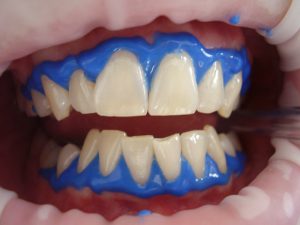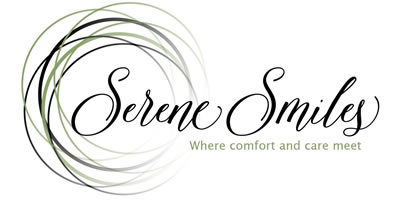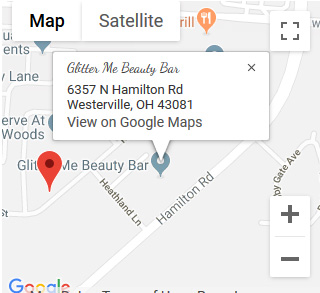Teeth whitening is a multi-billion dollar industry. It is so prevalent in today’s market that it can be confusing to know which type is best for you. This blog will help you understand the various types of teeth whitening and cut through the noise.
- Professional In-Office Whitening
The most expensive type of teeth whitening is the kind performed on your teeth by a dental professional during a procedure in the dental office. We call this “in-office” whitening. This type of whitening utilizes the highest strength of the active ingredient in order to obtain the fastest result. Some systems use a light to warm the gel, which speeds up the whitening process.
Because of the high concentration of the gel, the dentist places a protective barrier on the gums. This gel is not available for at-home use because if it contacts the gum tissues, it will cause a chemical burn. Direct supervision by the dentist is necessary for safety.
Professional in-office whitening is the best type for those who need a very fast result (imagine that your daughter is getting married this weekend). In most cases, patients experience a whitening effect of at least 3-4 shades. Some brands of in-office whitening are ZOOM!, Boost™, and Kör.
- Professional At-Home Whitening
Professional at-home whitening is the “gold standard” among dentists for the most predictable and sustainable teeth whitening. This type of whitening requires an initial investment for a custom-fitted application tray that perfectly matches the shape of your teeth. These trays last for many years, and you can purchase refills of the whitening gel as needed.
 The reason dentists love this type of whitening is because it is the most customizable and produces the longest-lasting results. All teeth whitening will fade over time and require some maintenance. With custom trays that are durable and properly fitted, you can easily maintain your bright white smile with at-home whitening.
The reason dentists love this type of whitening is because it is the most customizable and produces the longest-lasting results. All teeth whitening will fade over time and require some maintenance. With custom trays that are durable and properly fitted, you can easily maintain your bright white smile with at-home whitening.
The custom-fitted trays have the advantage of keeping the whitening gel in a uniform thickness against the teeth so that it works evenly and does not waste excess material. They also prevent the gel from contact the gums.
Professional at-home whitening gels come in a variety of concentrations, so you and your dentist can select the strength that is best for your needs.
- Over-the-Counter Gel Systems
Very similar to professional at-home whitening are several over-the-counter gel systems. They use the same active ingredients in the gels (usually at a lower concentration) and a generic tray to apply the gel to the teeth. These systems do work to produce a whitening effect.
The results may be slower and less noticeable for a couple of reasons. First, the lower concentration of the gel simply takes longer to work. Also, the generic trays do not keep the gel in uniform contact with all of the teeth. The trays may allow the gel to pool in the bottom of the tray, thus only whitening the lower half of the teeth.
Some of these systems use a light, and this light can, if used with the appropriate active ingredient, speed up the whitening process. There are countless brands marketed and endorsed by celebrities on social media these days. Do not be fooled, though. Most celebrities have porcelain veneers covering their front teeth, so they are not actually whitening their teeth with the products they endorse.
- Over-the-Counter Strips
One of the first over-the-counter teeth whiteners was Crest WhiteStrips. These strips contain the whitening gel on a small sheet of plastic that molds across the front of the teeth. This type of whitening is great if you are not in a position to purchase the custom-fitted trays from your dentist. The strips will adapt to the surface of the teeth better than a generic tray from another over-the-counter system, and it holds an appropriate amount of gel on the strip.
The disadvantage of these strips is that they can be tough to get into place, and then they slip. Many people find them difficult to master. If you do, though, they work really well!
- Whitening Toothpaste

Of the five types of whitening listed in this blog, this is the only one that does not contain a peroxide chemical and actually produce color changes within the tooth. Whitening toothpaste does, however, produce a brightening effect. It contains tiny abrasive particles that gently polish away stains that collect on the surface of enamel.
Using whitening toothpaste is a great way to maintain a bright smile if you drink coffee, tea, red wine, etc . . . It does not change the color of the underlying tooth. It just removes darkening stains from the superficial layers, allowing the natural tooth color to shine.
More Questions about Teeth Whitening?
Call today to schedule a consultation. We can discuss the specific professional teeth whitening options that we offer and help you select the type that is best for you.



Comments are closed.